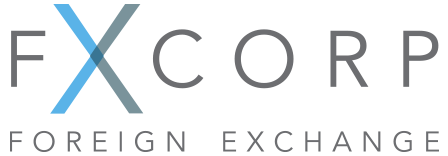AUD Firm After the Weekend's Clear Election Result
AUD
The Aussie dollar resumes a similar position to Friday’s open against most majors, with a subdued weekend session of data leaving the Aussie travelling within comfortable ranges. Asian equities were higher across the board, after China cut a key lending rate to alleviate pressure caused by Covid lockdowns. The ASX finished Fridays session +1.15%, closing the week +1%, its first weekly gain since mid-April. Commodities were mixed with Gold trading +0.2% higher, Copper up +0.5% however Iron Ore lost out heavily and weighed in on the AUD, losing -2.1%. Australia held its Federal election over the weekend with a clear win to Anthony Albanese’s Labor Party, though the shift in power doesn’t gain enough traction to impact heavily on financial markets. Shanghai's central Jingan district, a key commercial area of the Chinese financial hub, announced all supermarkets and shops to shut and residents to stay home until later in the week. The ongoing lockdowns weigh on risk appetite and the sentiment would be expected to pull on equities, undoing some of the rallies from Friday. A quiet week of local data this week with expectations of Chinese restrictions on foreign data to take the front seat in days ahead.
USD
The AUDUSD ticking higher into Monday morning to fight a resistance level that outmatched the Aussie Dollar twice already since Friday, currently trading at 0.7060. The S&P 500 and the Dow Jones closed Friday unchanged while the NASDAQ was -0.3% to round out what was otherwise a volatile week. U.S yields edged lower down -5.1 basis points to 2.79%, while Oil posted minor gains and closed at $110.60 a barrel. There was some later USD demand when the Federal Reserve’s Bullard said that the Fed might need to get rates to 3.5% by the end of the year and called for front loading of rate hikes. He did however say that rates could be lowered in 2023 or 2024 if inflation is brought under control. No other data to report out of the US over the weekend, yet there will be another quiet start before FOMC minutes and inflation data from the U.S likely to be the main events.
EUR
The AUDEUR trading in relatively tight ranges throughout the weekend, with little deviation from the comfort-zones entered earlier last week, sitting at 0.6675 at time of writing. European equities started Friday off strongly before taking a breather into the close, still higher on the day with the FTSE up +1.2% at the closing bell with the DAX up +0.7% and the CAC gaining +0.2%. German PPI YoY in April printed at 33.5%, up from a previous 30.9% and better than expectations of 31.3%. ECB policymakers hit the wire, with Kazak commenting that monetary policy can’t do the heavy lifting to aid the economy. Muller added that the ECB needs to focus on fighting high inflation. Most importantly, President Lagarde said the first increase in interest rates in more than a decade may come in July but downplayed the idea of a half-point move amid concerns about economic expansion. She joins a growing number of ECB policymakers calling for a July hike after inflation hit 7.5 per cent in the Eurozone last month.
GBP
The AUDGBP also trading within familiar ranges to trade at 0.5646 this morning. The Bank of England Chief Economist Huw Pill waded into the debate about how to fix Britain’s cost-of-living crisis. Pill said the BOE needed to be “cautious about pretending it’s the saviour for all possible events”, also saying that inflation is forecast to rise into the double digits, adding that monetary tightening has further to run. Adding to the fight against inflation pressures was Boris Johnson who said that in the months ahead, the UK is going to have to use its fiscal firepower to mitigate the cost-of-living squeeze. Little response from markets with attention turned to a handful of data from the UK this week.
NZD
The AUDNZD was the worst performing of the major currency pairs as the Aussie sold off some previous gains to trade a few basis points over 1.10 at time of writing. The RBNZ will be a frontliner for markets this week and ''there is a wide range of views over how much the Reserve Bank should increase interest rates, particularly for the coming year. The majority view was that the Official Cash Rate (OCR) should be increased by 50 basis points at the May meeting. However, there was a divergence in views on how much the OCR should be increased beyond the May meeting. This wide range of views reflects both different concerns held by the Shadow Board members compounded by the large degree of uncertainty over the economic outlook over the coming year. Keep an eye out on Wednesday this week.
